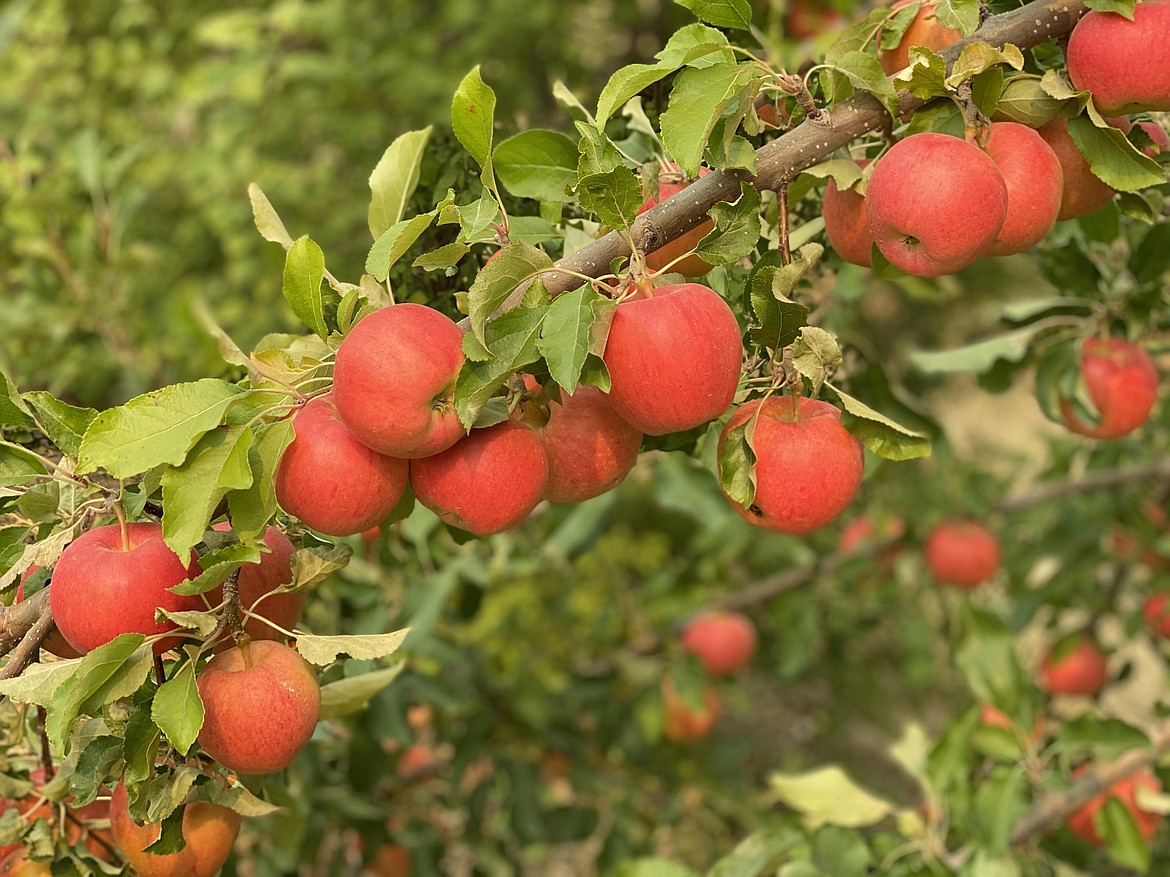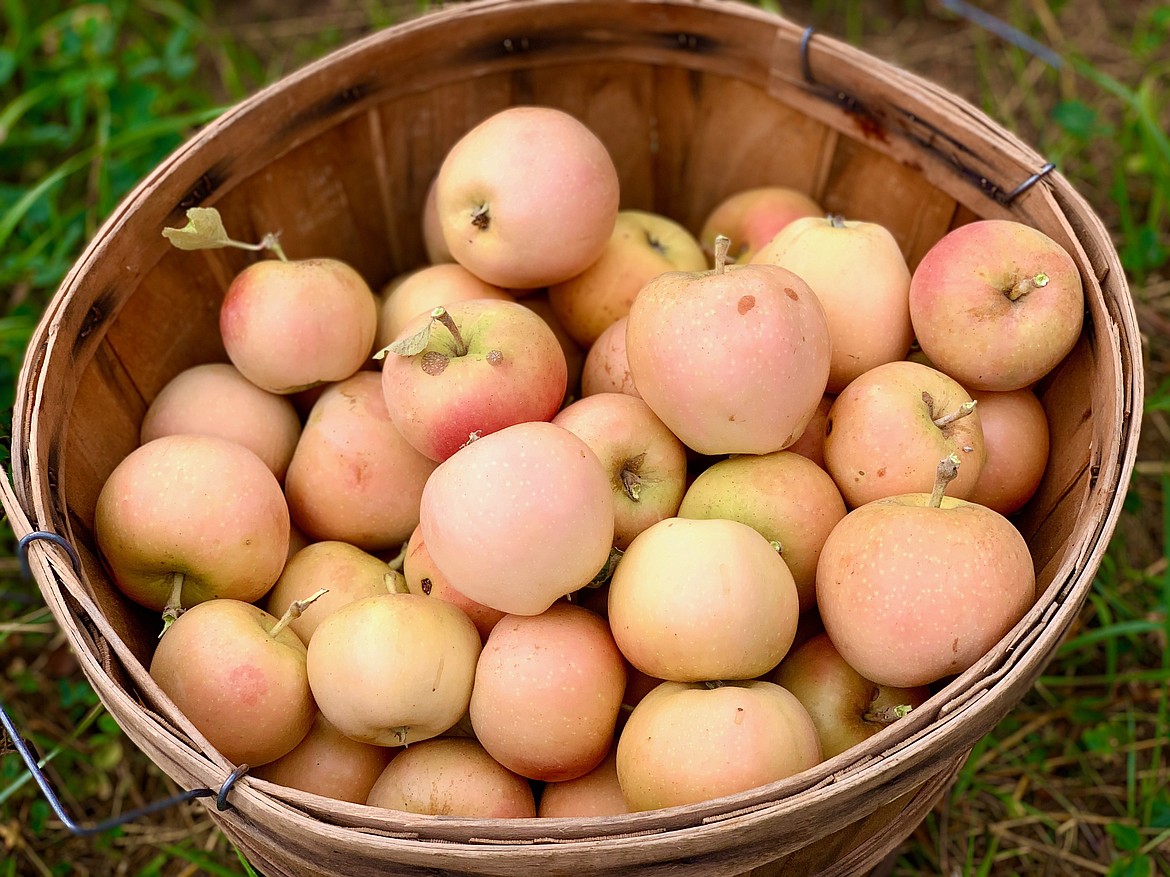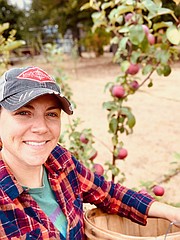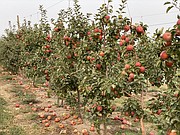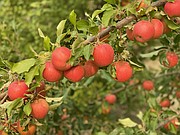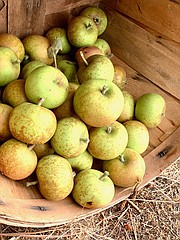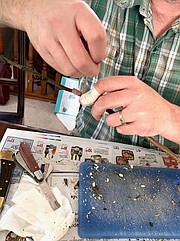Idahoans, past and present, really like them apples
Move over Washington, you’re not the only apple-growing state.
At least to hear pomologist Dr. Esmaeil Fallahi tell it.
The head of the University of Idaho’s Pomology and Viticulture Program has worked with Idaho fruit growers to stay at the top of the game, competing worldwide after a few market setbacks in the ‘90s, when China quickly outpaced many in the global apple market, among other challenges.
“I told our growers that it is time to shift to the newer technology, to shift to higher density and to catch newer varieties like gala and fuji,” said Fallahi.
“It is all modern, very high-tech. And then it is the latest technology produced for planting, for harvesting, for irrigation, and obviously a lot of them are computerized.”
By embracing new technology that maximizes efficient land and water use, Idaho apples and other fruit have a widespread international appeal. From southern Idaho, growers export to at least 52 countries.
Closer to home, Nikki Conley of Athol Orchards says there’s a strong history of apple-growing in North Idaho as well. She says orchardists and those more experienced with apple trees can recognize old apple-bearing trees just driving on Prairie toward Post Falls.
“It's actually pretty cool. You can drive around and see these old farms and houses actually have remnant orchards, and you can see that they're original. They're probably close to 80, 90-year-old orchards,” said Conley.
Appleway and Orchard Drive aren’t just whimsical street names – they’re a testament to this area’s orcharding days.
“So it's pretty fun to spot those old apple trees, because those are the old relics. There used to be a lot of orchards through this area but of course with development they got wiped out little by little.”
Athol Orchards was the once the site of a homesteading fruit orchard, and has several historic apple varieties – including a few dating to the 16th century as well as two varieties favored by Thomas Jefferson. When researching apples to fulfill a childhood dream of being an orchardist, Conley grew fascinated with historic and early American apple varieties, so Athol Orchards became an educational, as well as functional, orchard.
“I call it a living history museum, but in a sense that what we’re growing is what’s historical- - the actual apples themselves,” said Conley.
“The genetics of these apples has gone unchanged and unmodified since the first time they were ever discovered.”
It turns out, Idaho’s a pretty good region for apple-growing, although apples are fairly adaptable..
Apples, Fallahi says, do well with colder winters; they like to go dormant and gradually “wake up” in a slow spring. And in the summer, the fruits need warm days and cooler nights.
If they’re warm at night, whatever energy, or sugar, the apple has synthesized during the day gets used up at night as the apple “perspires.”
“But for Idaho, they have warm days and cool nights. Therefore at nighttime, during that cold period that apple don’t perspire as much. They use that energy to make flavor out of those ‘goodies’ they make with the photosynthesis during the day,” he said.
And it’s not just taste that improves from good climatic conditions.
“Because we have cool nights and warm days, the color will be fantastic,” Fallahi added. “We have good flavor and good color that's why a lot of European countries and countries on the Pacific rim, they are demanding our cherries, and our apples and peaches.”
“This year was the first year that we actually had some of the historical varieties bearing fruit.”
Even after grafting, it can take trees three to five years to bear fruit. Conley and her family bought the orchard in 2016, when they began cultivating many of their historic varieties. So some of her efforts are just coming to fruit this year.
“This is the first year my family and I have gotten to taste this fruit,” she said.“It’s kind of neat…because you know you’re not ever going to find these apples at the grocery store.”
Both Conley and Fallahi emphasized how few varieties are demanded by the market. Few are even well known enough to be a household name. And in the case of many historic varieties, many don’t fit the modern definition of an apple.
“Many of the old varieties are just really, really ugly,” Conley said.
Historic varieties often have natural russeting – a brownish, corky texture with a pattern like varicose veins - which can be a little rougher than the sheen of the smooth specimens at grocery stores nowadays.
“Rather than this apple looking shiny with smooth skin and just like a bright red or bright green beautiful color, these apples almost have skin like a potato,” Conley explains.
“And if you were to ever put an apple like that in a grocery store in the produce section they would never be able to sell it.”
Historical varieties are very rich in genetics and qualities far beyond what's available at the grocery store, in flavor, texture, acidity, and even for storage ability, she says. Plus, some historic varieties are prone to problems like fireflies, who like their juice. Even when more beautiful varieties are cultivated, it can take time for the market to catch on, says Fallahi.
“That is why we are dealing with only a handful of apples in the market,” he said, “while altogether all over the world there are at least 2,000 varieties of apples.”
But homesteaders and early American settlers had broader ideas of what made an acceptable apple – perhaps because they knew that different apples were good for different uses.
Even today, Conley says, varieties for specific uses are cultivated outside of the grocery market. Some apples are better for baking than eating.
Some, like a local homesteader favorite - the white or yellow transparent, ripened in midsummer and faded so fast, they were better best suited for making apple sauce.
Cider apples are often too sour for regular eating, but they work well pressed and fermented.
Some historic apples in particular were even ideal for long-term storage. Before refrigeration, “keeper” apples would be stored in a root cellar through winter.
Even in modern times, apples are picked in the fall and stored through the year, although thanks to modern refrigeration, mainstream varieties can be kept year-round, requiring a little less careful breeding to develop the most durable apples (and allowing for more focus on taste and texture).
“Apples are only harvested once a year and in Washington or these other big growing regions they store those apples literally all year in cold storage,” said Conley.
“So the apple that you bought a month ago was actually harvested last October. So it's not fresh at all, but that's what Americans are used to with their food.”
These are the kinds of lessons Conley hopes to continue to offer at Athol Orchards, putting her K-12 education background to good use.
“But we're definitely growing them to share them with the community and also teach what they were used for.”
As Athol Orchards continues to grow and expand on their new farm-based kitchen (and future cider mill), they hope to walk visitors through more and more steps of the tree-to-product process.
Young and older visitors alike already learn more about apples and orcharding – as well as American apple history, including Johnny “Appleseed” Chapman himself.
“He was a real person,” Conley explained. “He did go out to plant apple trees but he was not planting fresh eating apples… the apples that he was growing were mostly for cider, for hard cider.”
European settlers depended on fermented fruit juices like hard cider. After all, European water was not reliably safe to drink, so other drinks were more widely consumed.
Of course, Appleseed Chapman was also able to acquire much of the land he grew apples on and sell it to settlers. His motives may not have been totally altruistic.
“There's a lot of history and a lot of really neat stories to share as pertains to the apples,” Conley said.
“It's not just apples; there's so much more to it.”
Tours can be arranged at Athol Orchards in October by appointment. Dr. Fallahi also teaches free classes for fruit growers in both Northern and Southern Idaho in the winter. Class dates are not set yet, but you can contact the program’s office at (208) 722-6701 to put your name on a notification list.





